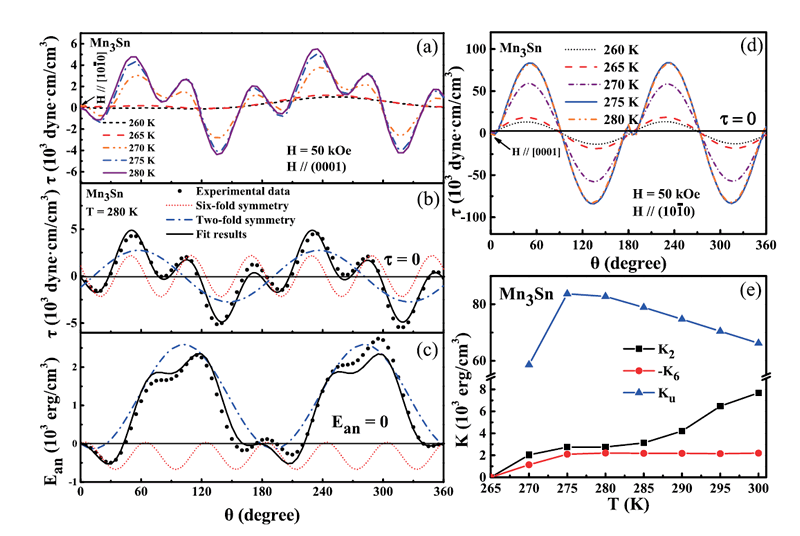
Magnetic anisotropy of single-crystalline Mn3Sn in triangular and helix-phase states |
|
Mn-based compounds can be either ferromagnetic or antiferromagnetic due to the different distances of Mn-Mn atoms and the different manganese valences i.e. the magnitude of 3d electrons. Under various crystal fields and symmetries, magnetic frustration and other novel magnetic structure form. Mn3Sn is a spiral and triangle spin configuration as well as antiferromagnetic and weak ferromagnetic (WFM), at low and high temperature respectively. Single-crystal Mn3Sn was grown and investigated by torque and magnetic measurements. The WFM of Mn3Sn originates from the metamagnetic transition in (001). Six-fold and two-fold symmetries in the (001) plane have been established, associated with the magnetocrystalline anisotropy and distortion of the equilateral triangular spin configuration, respectively. It has also been demonstrated that the [110] direction is the lowest-energy state in the triangular spin configuration. The conclusions obtained from the magnetization and torque measurements are summarized in a magnetic phase diagram.
Fig2. (a) Temperature dependence of the magnetization of Mn3Sn in a magnetic field of 200 Oe and (b-d) hysteresis loops measured at 255 K, 270 K and 285 K, respectively. The inset in (a) shows the heat capacity of Mn3Sn.
Fig.2.¡¡Torque at a magnetic field of 50 kOe in the temperature range from 260 to 280K for (a) the (001) plane and (b) the (100) plane. (c) Fit of the torquefor the (001) plane at 280 K. (d) Temperature dependence of the anisotropy constants of Mn3Sn at 50 kOe. |
|

